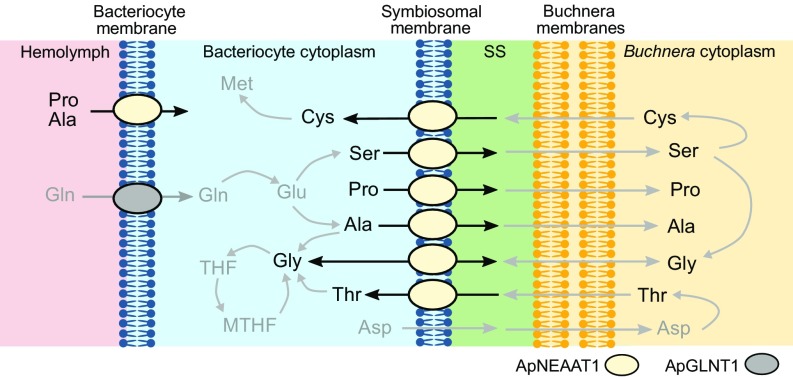Fig. 5.
A schematic model depicting the proposed physiological function of the amino acid transporter ApNEAAT1 in amino acid transfer across the bacteriocyte and symbiosomal membranes in the aphid/Buchnera bacteriocyte. The predicted pathways are based on the membrane localization and functional characterization of ApNEAAT1 here, alongside metabolite profiling of hemolymph and bacteriocyte, and host and symbiont metabolic pathway analysis (protein and gene expression) in previous investigations (16, 20, 21, 24, 29, 32–35). ApNEAAT1 substrates are identified in black text with nonsubstrates presented in gray text. The bacteriocyte membrane ApNEAAT1 is depicted as mediating influx into the bacteriocyte. However, if the concentration of any ApNEAAT1 substrate within the bacteriocyte was greater than in the hemolymph, it could also mediate efflux from bacteriocyte to hemolymph to supply other tissues, for example, during growth and development. MTHF, 5,10-methylene tetrahydrofolate; SS, symbiosomal space.

